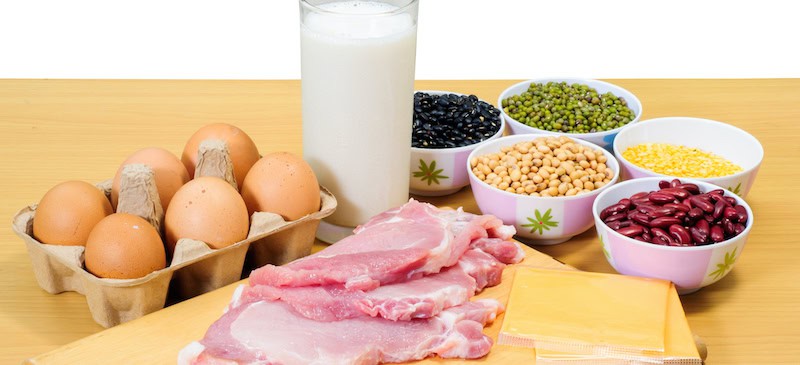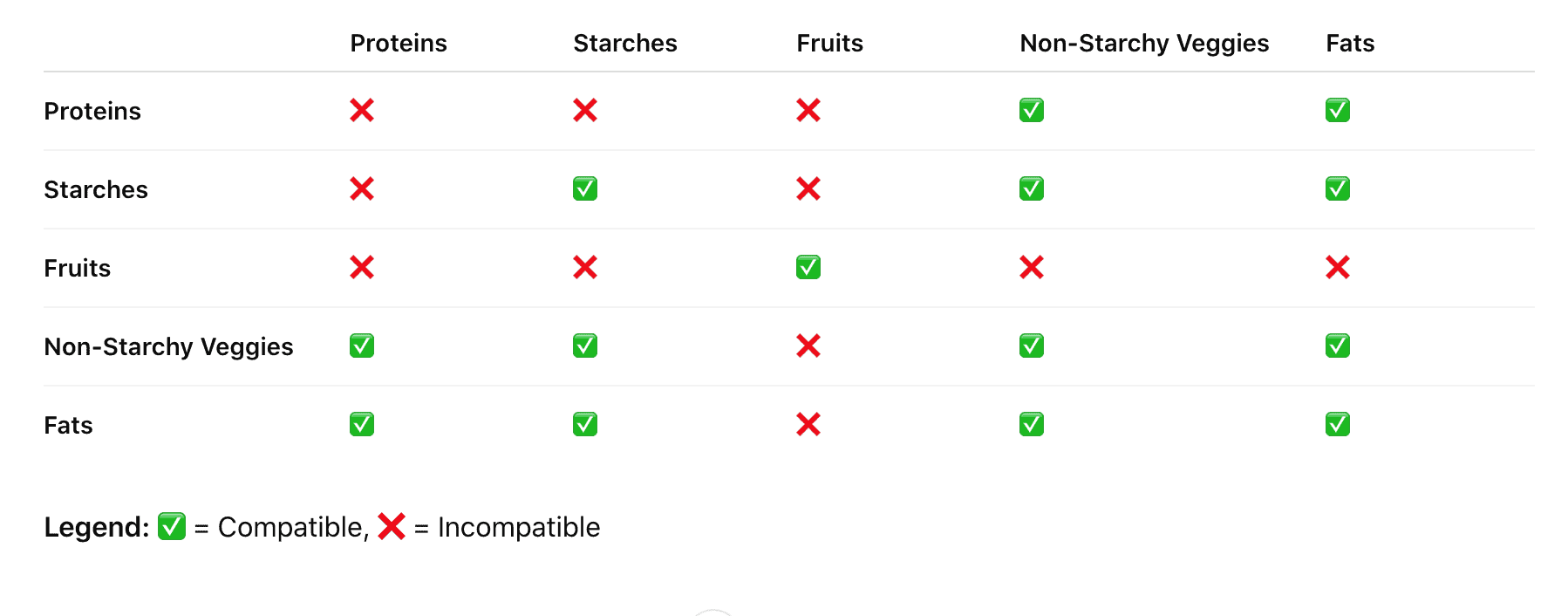This Dr. Axe content is medically reviewed or fact checked to ensure factually accurate information.
With strict editorial sourcing guidelines, we only link to academic research institutions, reputable media sites and, when research is available, medically peer-reviewed studies. Note that the numbers in parentheses (1, 2, etc.) are clickable links to these studies.
The information in our articles is NOT intended to replace a one-on-one relationship with a qualified health care professional and is not intended as medical advice.
This article is based on scientific evidence, written by experts and fact checked by our trained editorial staff. Note that the numbers in parentheses (1, 2, etc.) are clickable links to medically peer-reviewed studies.
Our team includes licensed nutritionists and dietitians, certified health education specialists, as well as certified strength and conditioning specialists, personal trainers and corrective exercise specialists. Our team aims to be not only thorough with its research, but also objective and unbiased.
The information in our articles is NOT intended to replace a one-on-one relationship with a qualified health care professional and is not intended as medical advice.
Food Combining Rules, Benefits & How to Follow This Ancient Approach to Eating
July 9, 2025

Have you ever finished a meal and felt bloated, sluggish or heavy? You’re not alone. Many people struggle with post-meal discomfort, and while it can be caused by various factors, one concept gaining renewed attention is food combining, an approach rooted in ancient dietary principles and now supported by many functional nutrition experts.
Food combining is an eating philosophy based on the idea that certain food combinations can either support or disrupt digestion, energy and overall well-being. Though it’s gained modern attention as a potential tool for weight loss and digestive health, the concept of combining foods mindfully has deep tradition in systems like Ayurveda and Traditional Chinese Medicine.
So what is food combining, and can it really help you feel better, digest more efficiently and even improve energy? Does it actually work, and how do you follow a food combining diet without overcomplicating your meals?
Let’s dive in to how this method works, who might benefit most and how to apply it practically to your lifestyle, along with the core food combining rules, a helpful food combining chart and tips to help you incorporate these principles into your everyday routine.
What is food combining?
Food combining is a dietary approach that involves eating certain foods together, and avoiding others, based on how they digest in the body. The central idea is that different food types (proteins, starches, fats, fruits, etc.) require different digestive enzymes and digestive conditions.
When eaten together in “incompatible” combinations, these foods can lead to gas, bloating, poor digestion and reduced nutrient absorption.
At its core, food combining is a nutritional strategy that focuses on how different foods interact in your digestive system. The idea is that certain combinations can either support or hinder digestion, affecting everything from nutrient absorption to gut health and energy levels.
This isn’t a new trend. Food combining has roots in Ayurveda, Traditional Chinese Medicine and natural hygiene principles popularized in the early 20th century. These systems emphasize the importance of digestive fire (or “agni” in Ayurveda) and how improper pairings can dampen it.
Though popularized by modern nutrition advocates, food combining principles trace back thousands of years in Ayurveda, where the term Viruddha Ahara refers to incompatible food combinations that can disturb digestion and energy balance.
In the modern wellness world, food combining is all about pairing foods that digest at similar rates and require similar enzymes, minimizing digestive stress and maximizing nutrient utilization.
Food combining rules and principles
While there are different variations, most food combining philosophies follow a few key rules:
1. Don’t mix proteins and starches
Protein-rich foods (like meat, eggs and cheese) require acidic digestive environments, while starchy foods (like potatoes, rice and bread) require more alkaline conditions. When eaten together, they may “cancel each other out,” slowing digestion.
✅ Better combo: Protein + non-starchy vegetables
❌ Avoid: Steak and potatoes, burger on a bun
2. Eat fruit alone
Fruit digests rapidly, often within 30 minutes. If eaten after a heavier meal, it can ferment in the stomach, causing gas and bloating.
✅ Better option: Fresh fruit on an empty stomach or between meals
❌ Avoid: Fruit salad with dairy or dessert after dinner
3. Limit multiple protein sources in one meal
Different proteins (like eggs and steak) digest at different rates and need varying enzymes. Combining animal proteins (like fish and cheese) may overload the digestive system.
✅ Better combo: Choose one protein per meal
❌ Avoid: Surf and turf, bacon and sausage together
4. Avoid combining fats with protein
Fat slows the digestion of protein. Too much fat (especially from fried foods or heavy oils) can lead to sluggish digestion and fatigue.
✅ Better combo: Lean protein with steamed veggies
❌ Avoid: Fried chicken or creamy sauces on meat
5. Eat melons alone
Melons are particularly fast-digesting. They don’t pair well with other fruits or any other food. In fact, melons digest faster than almost any other food, so combining them may cause fermentation.
✅ Best: Eat melons first thing in the morning or 30-60 minutes before other food
❌ Avoid: Melon with yogurt or as part of a fruit salad
6.Don’t mix acidic foods with starches
Acidic foods like tomatoes, vinegar, citrus or fermented vegetables can interfere with the digestion of starchy foods. This can lead to fermentation and bloating.
✅ Better combo: Tomato with greens or protein
❌ Avoid: Pasta with marinara sauce, rice with pickled veggies
7. Wait between meals with different food types
Switching food types too quickly (e.g., going from fruit to heavy protein or starch) can confuse digestion. It’s best to wait two to three hours between different combinations to allow full digestion. For example, wait two to three hours after eating fruit before consuming a heavier meal.
✅ Better habit: Space meals out by food type
❌ Avoid: Snacking on fruit soon after a meat-heavy meal
8. Select one main food group per meal
Simplifying meals by focusing on one dominant food group (like protein, starch or fruit) allows your digestive system to work more efficiently.
✅ Better combo: Quinoa with vegetables or grilled chicken with greens
❌ Avoid: Mixing fruit, starch, fat and protein all in one bowl
9. Remove certain unhealthy foods
Some foods clash with almost everything, especially ultra-processed ingredients, refined sugar, processed meats and artificial additives. These interfere with digestion and overall health.
✅ Choose: Whole, minimally processed, organic ingredients
❌ Avoid: Sugary snacks, processed sauces, fast food
10. Stop grazing between meals (or go neutral)
Constantly eating prevents your digestive system from completing its work. If you must snack, go for something neutral like a small portion of vegetables, broth or herbal tea.
✅ Better habit: Allow three to four hours between meals for full digestion
❌ Avoid: Snacking on fruit or nuts right after a large meal
Food types
Understanding how different food types are categorized is key to following food combining guidelines:
| Food Group | Examples |
|---|---|
| Proteins | Eggs, poultry, meat, fish, tofu, legumes |
| Starches | Bread, rice, potatoes, corn, grains |
| Fats | Avocados, nuts, seeds, olive oil, butter |
| Fruits | Apples, bananas, berries, melons, citrus |
| Vegetables | Leafy greens, broccoli, carrots, zucchini |
| Sugars | Honey, maple syrup, processed sugar |
Neutral foods like non-starchy vegetables are generally safe to eat with any food group.
Potential benefits
While large-scale clinical studies are limited, many people who follow food combining report noticeable improvements in:
- Digestion. Less bloating, fewer gas issues, reduced heartburn and more comfortable bowel movements.
- Energy levels. Fewer energy crashes or post-meal fatigue. By reducing digestive burden, the body can redirect energy to other functions, like mental clarity and vitality.
- Weight management. Improved portion control and mindful eating. Some report reduced cravings and more natural appetite regulation.
- Detoxification. Faster elimination and regularity.
- Mind-body balance. Greater awareness of food choices.
- Skin. Improved digestion and detoxification may help support clearer skin.
- Reduced inflammation. Some combinations may reduce gastrointestinal stress and systemic inflammation over time.
Some people also turn to food combining for weight loss, especially when it encourages whole, unprocessed food and better meal spacing.
Here are some more potential benefits of following a food combining diet:
- Encourages the consumption of whole, nutrient-rich foods, which naturally boosts your intake of fiber, essential vitamins, minerals and protective antioxidants.
- Often leads to a greater focus on plant-based eating, with more fruits, vegetables, legumes and whole grains incorporated into daily meals.
- Allows you to eat generously while still feeling full, thanks to high-fiber, low-calorie foods that provide volume without excess energy.
- Minimizes hyper-palatable, ultra-processed options like fast food and packaged snacks. Removing these can support healthy weight management and better metabolic function.
- Can contribute to improved nutrient absorption by promoting better digestive health and supporting the gut microbiome.
- Doesn’t typically demand strict food eliminations, making it a flexible and sustainable approach that fits into most lifestyles.
- Simplifies meal planning and prep, as it often encourages repetition of easy-to-make, balanced meals that save time without sacrificing nutrition.
Food combining chart
Here’s a simple food combining chart to help you get started:

If you’re looking for more detail, here is a food combining chart provided by Banyan Botanicals based off an Ayurvedic diet:

How to follow a food combining diet
You don’t have to overhaul your entire lifestyle to try food combining. Here’s how to ease in to it:
- Start your day with fruit (alone): Eat fresh fruit 30-60 minutes before heavier meals.
- Eat simple meals: Keep meals to two to three main ingredients for easier digestion.
- Separate proteins and starches: Opt for meals like grilled salmon with greens or quinoa with roasted vegetables, but not both.
- Use a food combining chart: Keep one handy while meal planning.
- Be patient: It can take a few days to notice benefits.
Food combining meal plan
Here’s a one-week food combining meal plan based on the most common food combining rules, designed to support digestion, energy and potentially weight loss. This plan separates incompatible food types (e.g., starches and proteins) while focusing on whole foods, fresh produce and simple combinations.
Key guidelines
- Fruits are eaten alone, ideally in the morning.
- Proteins are not mixed with starches.
- Non-starchy vegetables are treated as “neutral” and can be combined with either proteins or starches.
- Meals are spaced to allow time for digestion (three to four hours between main meals).
- Portions are adjusted to personal needs. Aim for mindful eating and hydration.
Day 1
- Morning (fruit only): Fresh pineapple + kiwi slices
- Lunch (protein + vegetables): Grilled salmon with steamed broccoli and arugula salad
- Snack: Celery sticks with almond butter
- Dinner (starch + veg): Quinoa bowl with sautéed zucchini, carrots and olive oil
Day 2
- Morning (fruit only): Watermelon or cantaloupe slices (eat alone)
- Lunch (starch + veg): Sweet potato with sautéed kale and coconut oil
- Snack: Cucumber slices with lemon and sea salt
- Dinner (protein + veg): Baked chicken breast with roasted cauliflower and Brussels sprouts
Day 3
- Morning (fruit only): Mixed berries (blueberries, strawberries, blackberries)
- Lunch (protein + veg): Tofu stir-fry with bok choy, mushrooms and sesame oil
- Snack: Handful of soaked walnuts
- Dinner (starch + veg): Brown rice with roasted bell peppers and eggplant
Day 4
- Morning (fruit only): Mango and papaya chunks
- Lunch (starch + veg): Lentil and carrot stew with mixed greens on the side
- Snack: Sliced avocado with sea salt
- Dinner (protein + veg): Grilled turkey burger (no bun) with steamed asparagus and spinach
Day 5
- Morning (fruit only): Sliced apples with cinnamon
- Lunch (protein + veg): Hard-boiled eggs with mixed greens, cucumbers and olive oil
- Snack: Zucchini hummus with celery sticks
- Dinner (starch + veg): Millet with roasted squash and sautéed green beans
Day 6
- Morning (fruit only): Grapefruit or oranges (eat alone)
- Lunch (starch + veg): Baked potato with chives and a side of steamed cabbage
- Snack: Pumpkin seeds or sunflower seeds
- Dinner (protein + veg): Pan-seared halibut with Swiss chard and fennel
Day 7
- Morning (fruit only): Banana or papaya smoothie (with water or coconut water, no dairy/milk)
- Lunch (protein + veg): Grilled tempeh with sautéed collard greens and onions
- Snack: Carrot sticks with tahini dip
- Dinner (starch + veg): Wild rice with sautéed mushrooms, asparagus and avocado slices
Tips
- Hydrate with warm lemon water in the morning and herbal teas between meals.
- Optional dessert: Baked apples or a small portion of dried fruit (only if separated from meals by at least two to three hours).
- Avoid: Dairy with fruits, combining meats with starches or heavy multicourse meals.
- Start slow: Don’t overhaul your diet overnight. Try one or two rules at a time.
- Keep a food journal: Track how you feel after different food combinations.
- Listen to your body: What works for one person may not work for another.
- Don’t obsess: Use food combining as a tool, not a rigid rulebook.
- Focus on whole foods: The quality of food is just as important as the combination.
Does food combining work?
While there’s limited clinical evidence that food combining boosts digestion or weight loss, anecdotal reports are strong. A small number of studies suggest that food order and timing can impact blood sugar, appetite and satiety.
That said, the primary benefits may come from:
- Eating more whole foods
- Reducing overeating
- Avoiding ultra-processed or heavy mixed meals
Food combining for weight loss may not work magic on its own, but it could be an effective tool within a larger healthy eating strategy.
While traditional medicine systems have long emphasized food synergy and digestive balance, scientific evidence on strict food combining is still emerging. Some studies support the idea that simpler meals can enhance digestion, and certain food pairings (like vitamin C with iron) can increase nutrient absorption.
On the other hand, rigid rules aren’t necessary for everyone.
Many dietitians suggest focusing on whole, minimally processed foods and listening to your body’s feedback.
When food combining might help
You may benefit from trying food combining if you:
- Often feel bloated or sluggish after meals
- Experience frequent indigestion or irregular bowel movements
- Have been diagnosed with IBS or other digestive imbalances
- Struggle with food sensitivities or poor appetite regulation
- Want to improve energy levels and metabolic efficiency
Risks and side effects
Food combining is generally safe, but there are some things to keep in mind:
- Nutrient gaps: Avoiding food groups together (like protein and carbs) too often may lead to deficiencies if the diet isn’t balanced.
- Unnecessary restriction: It may overcomplicate meals for some people, leading to food anxiety or under-eating.
- Digestive issues: Ironically, some people experience increased bloating early on due to changes in fiber intake or food timing.
It’s always best to listen to your body and speak with a nutritionist or health practitioner before making major dietary changes.
Frequently asked questions
Is food combining backed by science?
Scientific support is limited, but some aspects, like food sequencing or avoiding high-fat/carbohydrate combos, have some research behind them.
Can food combining help with weight loss?
It may help indirectly by improving digestion, reducing overeating and increasing food awareness.
Is it OK to eat fruit with meals?
In food combining, fruit is typically eaten alone, on an empty stomach.
Can I still get enough protein and carbs?
Yes. You can alternate meals. For example, eat protein with veggies at lunch and starch with veggies at dinner.
Conclusion
- Whether you’re seeking better digestion, improved energy or support for healthy weight management, food combining may offer benefits, especially when paired with a clean, whole-foods approach.
- The key is to keep it simple, listen to your body and use food combining rules as a flexible guide rather than a rigid plan.
- With the help of a food combining chart and mindful food choices, you can create meals that nourish both your gut and your goals.
- Food combining might not be for everyone, but for many people, it’s a gentle, mindful way to support digestion, increase energy and restore balance.
- Whether you follow all the guidelines or simply eat fruit on an empty stomach, tuning in to your body’s digestive rhythms can be an empowering first step toward better health.

